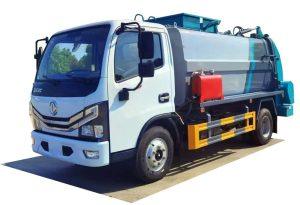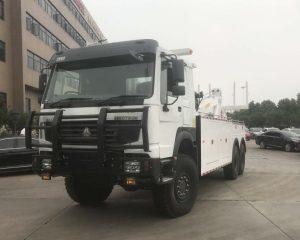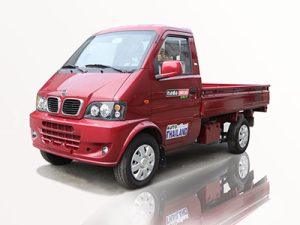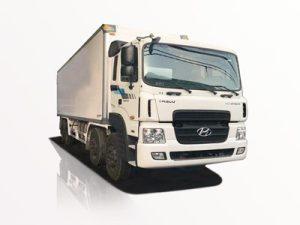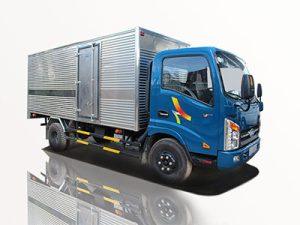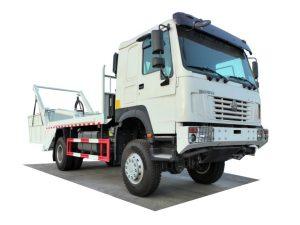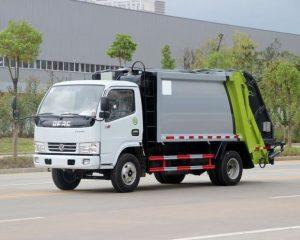Monday to Saturday - 8:00 -17:30
What is an Extended Cab on a Truck? A Comprehensive Guide
When it comes to choosing a truck, one of the most important factors to consider is the configuration and type of cab that suits your needs. Among the various options available, the extended cab trucks have gained popularity for their unique features and benefits. This article will provide you with a deep dive into the concept of an extended cab on a truck, exploring its advantages, differences from other cab types, suitable uses, and much more.
Understanding Truck Cabs
Before we delve into the specifics of an extended cab, it’s essential to understand the various types of truck cabs available. Truck cabs are primarily categorized into three types: regular cab, extended cab, and crew cab.
Types of Truck Cabs
- Regular Cab: This cab type typically features two doors and a bench seat, accommodating up to three passengers. It’s ideal for everyday use and when cargo space is a priority.
- Extended Cab: The extended cab has additional space compared to the regular cab, with rear seats that can occasionally be used. It generally features two back doors and provides extra legroom.
- Crew Cab: This type is similar to the extended cab but offers a full-size back seat for more passengers. It’s perfect for families or groups needing extra seating capacity.
What is an Extended Cab?
An extended cab truck is designed to provide more passenger space than a regular cab while still retaining a compact design. The extended cab typically features a longer cab portion, often with rear seats that can fold up or down, creating a versatile space that can be used for passengers or additional storage. This type of cab often has two rear-hinged doors that allow for easier access to the rear seats, which is a significant plus when compared to the limited access in a regular cab.
Key Features of Extended Cabs
| Feature | Description |
|---|---|
| Space | More interior space than a regular cab, suitable for occasional passengers. |
| Access | Two rear-hinged doors for easier entry and exit. |
| Versatility | Flat-folding rear seats for additional cargo space. |
| Compact Design | Still smaller than a crew cab, making it easier to maneuver. |
Advantages of Choosing an Extended Cab
1. Extra Space Without the Bulk
One of the main advantages of an extended cab is the additional space it provides compared to a regular cab. This extra space can accommodate up to four passengers, making it ideal for families or work crews. However, it doesn’t come with the same bulk as a crew cab, making it easier to park and maneuver in tight spots.
2. Versatile Uses
Extended cabs are versatile and can be used for a variety of purposes. Whether you need to transport kids, take friends out on an adventure, or carry extra cargo, extended cabs can handle it all. The rear seats can often fold down or be removed, providing more flexibility in terms of storage.
3. Cost-Effectiveness
In general, extended cab trucks are less expensive than crew cabs, making them a more cost-effective option for buyers who need space but want to stay within budget. This makes them an attractive choice for first-time truck buyers or those looking for utility without the extra expense.
4. Fuel Efficiency
While truck fuel efficiency largely depends on the engine type and driving habits, extended cabs often weigh less than crew cabs, which can help them achieve better fuel economy. This can make a significant difference in your overall operating costs, especially if you use your truck for daily commuting or longer trips.
Practical Examples of Extended Cab Use
1. Family Outings
For families who need a vehicle for trips and daily tasks, an extended cab truck serves well. Parents can comfortably transport children to school or activities while having enough room to store sports equipment or groceries in the back seat.
2. Work Utility
Construction workers and contractors can benefit from the extended cab’s seating capacity and storage versatility. The rear seats can be used to transport fellow workers to job sites while still providing additional storage for tools and materials.
3. Outdoor Adventures
For outdoor enthusiasts, an extended cab truck is perfect for weekend getaways. You can comfortably fit friends and family in the cabin, and if you fold down the back seats, you can easily pack camping gear or fishing equipment.
Comparing Extended Cab to Other Cab Types
Extended Cab vs. Regular Cab
- Passenger Capacity: Extended cabs can hold more passengers compared to regular cabs, which typically can only fit three people.
- Storage Space: Extended cabs offer additional storage flexibility while still being more compact than crew cabs.
- Maneuverability: Compared to crew cabs, extended cabs are easier to drive and park, making them suitable for urban environments.
Extended Cab vs. Crew Cab
- Space: Crew cabs provide maximum space for passengers, allowing for a comfortable fit for five or six adults.
- Cost: Extended cabs are generally less expensive than crew cabs, making them more budget-friendly.
- Weight: Extended cabs are lighter than crew cabs, potentially improving fuel efficiency.
Choosing the Right Truck Configuration for You
Factors to Consider
When deciding whether an extended cab is right for you, consider the following factors:
- Passenger Needs: If you frequently transport additional people, an extended cab could serve you well.
- Cargo Requirements: Think about whether you’ll need to carry a lot of gear or tools; extended cabs can offer a balance of space.
- Budge: Determine your budget and consider the total cost of ownership, including insurance and fuel costs.
Maintenance and Care Tips for Extended Cab Trucks
1. Regular Inspections
It’s critical to perform regular inspections to ensure the integrity of your truck, especially if you often use it for heavy hauling or off-road driving.
2. Keep It Clean
Regularly wash both the exterior and interior of your truck. This helps maintain its appearance and ensures a longer lifespan for the components. Particularly focus on cleaning the floors and seats in the extended cab area due to spills or dirt from passengers.
3. Check Fluid Levels
Check the oil, coolant, brake fluid, and transmission fluid regularly to maintain optimal performance. Refer to the user manual for the recommended intervals for oil changes and fluid replacements.
FAQs about Extended Cabs
1. Can I fit a car seat in an extended cab truck?
Yes, you can typically fit a car seat in an extended cab, but space may be limited, so it’s essential to ensure proper installation and safety compliance.
2. What safety features should I look for in an extended cab?
Look for features such as airbags, antilock brakes, stability control, and modern infotainment systems, which enhance both comfort and safety.
3. How much cargo can the bed of an extended cab truck hold?
The payload capacity will depend on the truck model and engine options; refer to the truck’s specifications for precise details.
4. Are extended cabs suitable for towing?
Yes, extended cab trucks can be very suitable for towing, but check the towing capacity for the specific model to ensure it meets your needs.
5. What are the disadvantages of an extended cab?
While extended cabs offer more space, they can still be cramped for full-sized adults and are less spacious than crew cabs. Additionally, the rear seats may not be as comfortable for long journeys.
6. Is it better to buy new or used when choosing an extended cab?
This depends on your budget and preference. Buying a used extended cab can save money, but ensure you consider the vehicle’s history and condition. A new truck may come with warranties and the latest technology.


